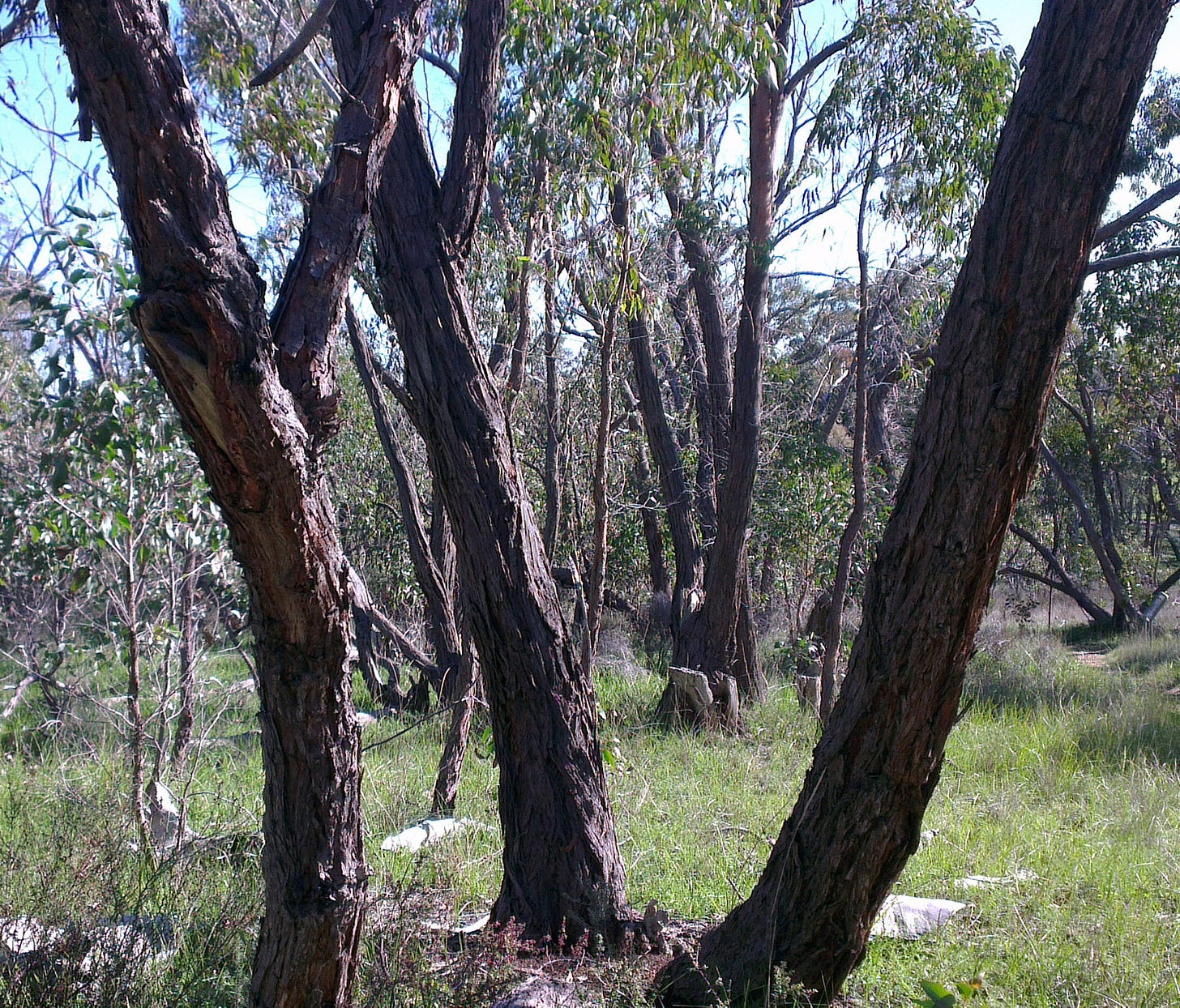Climate-driven droughts causing die-back of rare eucalyptus in Australia
Global heating could doom this tree that has survived for tens of thousands of years
Scientists in Australia have found that droughts driven by climate change have cut the population of a rare eucalyptus by almost half, with further implications for the ecosystem associated with this tree.
The scientists studied a subspecies of red stringybark eucalyptus. This tree is found throughout southeastern Australia and is distinguished by its rough, grey bark that comes off its trunk and limbs in strings. The subspecies of concern is isolated in the Clare Valley, about 70 miles north of the coastal city of Adelaide. The researchers used DNA analysis to confirm that the Clare Valley population is genetically distinct from the larger population of red stringybark. Evidence suggests that this subspecies has been distinct for the last 40,000 years. Study results were published in the journal Science of the Total Environment.
Until recently, the Clare Valley served as a refugium for this eucalyptus subspecies. Refugia are places that are buffered from stressors—such as drought, disease, or overly wet periods—in which a species might ride out trying times and use later as springboards to recolonize habitats when conditions return to normal. This subspecies of red stringybark eucalyptus has endured drought and other stressors since the Pleistocene, but climate change could make things too rough, even in this refugium, for the trees to survive.
The scientists monitored more than 400 red stringybark trees in the Clare Valley, concentrating their efforts in the Spring Gully National Park, a protected area that had previously experienced logging and heavy grazing. The study was conducted over 15 years, during which two major droughts struck southern Australia

.
Because of its position on the globe and its geography, droughts are common to Australia. In the early 1900s, in what was called the Federation Drought, conditions became so severe that rivers in western Queensland ran dry. Sheep and cattle ranching suffered severely. Throughout the entirety of World War II, most of the Australian continent suffered through drought. Droughts recurred in the 1960s and 1980s.
Keep reading with a 7-day free trial
Subscribe to The Green Dispatch to keep reading this post and get 7 days of free access to the full post archives.



